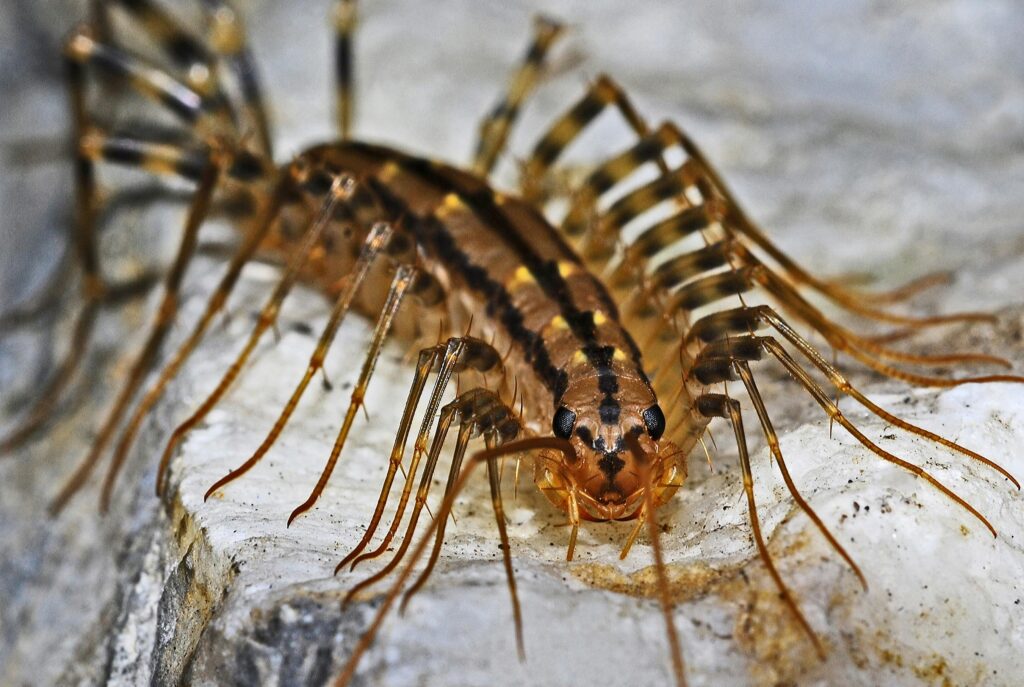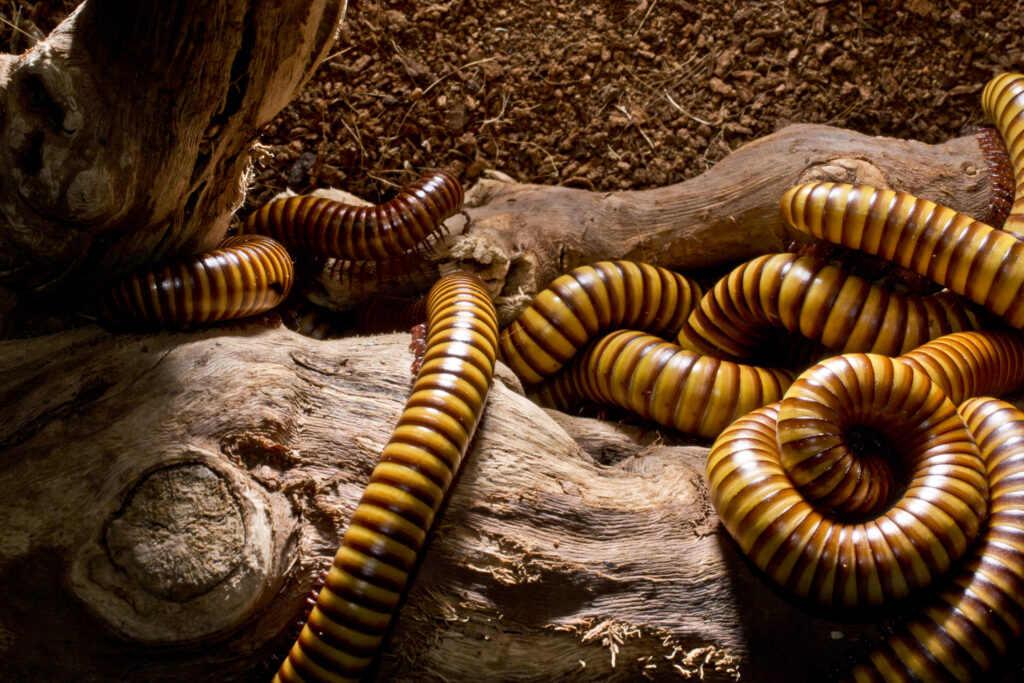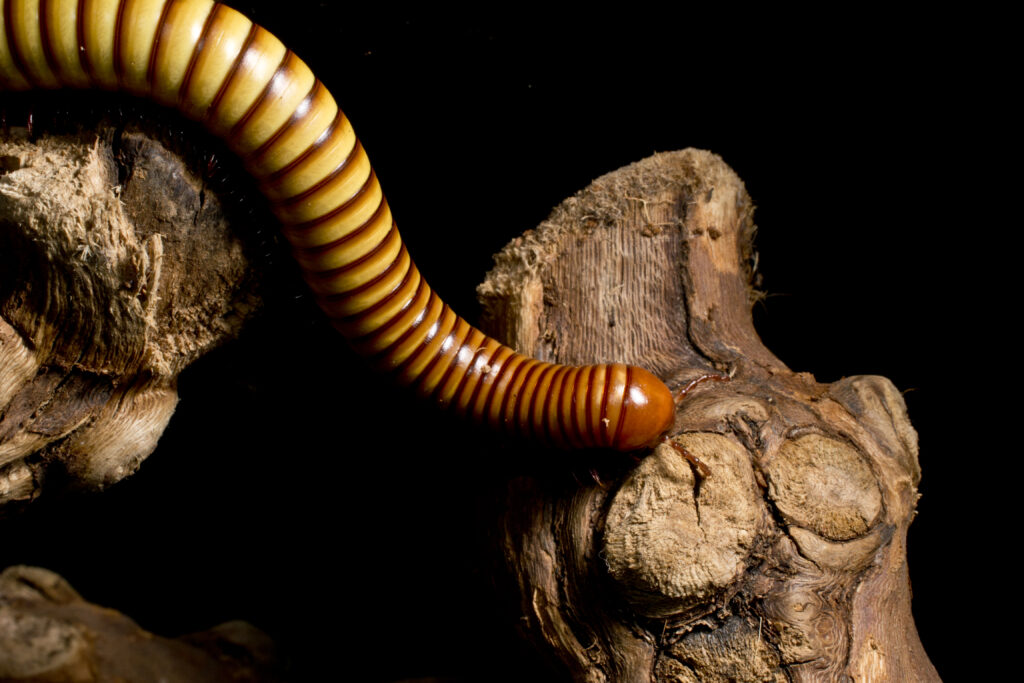House Centipedes and Millipedes: Introduction
In the Raleigh-Durham area, homeowners occasionally find themselves sharing their living spaces with some unexpected guests: house centipedes and millipedes. These multi-legged invaders can become a nuisance, especially during extreme weather conditions such as droughts or heavy rains. Understanding their biology and knowing how to control them can help you keep your home pest-free.
House Centipedes: The Swift Predators
Biology of House Centipedes

House centipedes (Scutigera coleoptrata) are easily recognizable by their long, slender bodies and numerous legs, which allow them to move quickly. They can grow up to 1.5 inches in length and have 15 pairs of long, delicate legs. These nocturnal predators are beneficial in controlling other household pests such as spiders, cockroaches, and ants.
House centipedes have a lifespan of about three to seven years. They prefer dark, damp environments and are often found in basements, bathrooms, and under sinks. Their elongated bodies and quick movements can startle homeowners, but their presence indicates that there might be other pest problems in the house.
Entry into Homes
House centipedes enter homes seeking moisture and prey. During extreme weather conditions like droughts, they may invade homes in search of a more humid environment. Conversely, after heavy rains, they may seek shelter indoors to avoid being drowned in their usual outdoor habitats.
Controlling House Centipedes
To control house centipedes, it is essential to reduce the moisture levels in your home. Here are some steps you can take:
- Eliminate damp areas: Use dehumidifiers in basements and other damp areas.
- Seal entry points: Fix cracks and gaps in walls, windows, and doors to prevent their entry.
- Reduce clutter: House centipedes thrive in cluttered areas where they can hide, so keep your home tidy.
- Regular pest control: Since house centipedes feed on other insects, regular pest control treatments can reduce their food sources, making your home less attractive to them.
In this video, we’ll share a few fast facts about centipedes, and also show some examples of what they may look like in your home.
Millipedes: The Slow Wanderers
Biology of Millipedes

Millipedes belong to the class Diplopoda and are known for their cylindrical bodies and numerous legs, with each body segment having two pairs of legs. They can range in size from a few millimeters to several inches in length. Unlike centipedes, millipedes are not predators; they feed on decaying plant matter, making them important decomposers in the ecosystem.
Millipedes prefer moist, dark environments and are commonly found under rocks, logs, and leaf litter. When disturbed, they can curl into a tight coil as a defensive mechanism.
Entry into Homes
Millipedes often enter homes during extreme weather conditions. During droughts, they search for moisture indoors, while heavy rains can flood their outdoor habitats, driving them inside. They are generally more of a nuisance than a threat, as they do not bite or sting.
Controlling Millipedes
Controlling millipedes involves managing moisture and reducing their entry points. Here are some effective strategies:

- Maintain proper drainage: Ensure that water drains away from your home’s foundation.
- Seal entry points: Repair cracks and gaps in the foundation, walls, and around doors and windows.
- Reduce outdoor debris: Remove leaf litter, mulch, and other organic matter from around the house.
- Indoor humidity control: Use dehumidifiers to keep indoor humidity levels low.
- Regular pest control: Professional pest control services can help manage and reduce millipede populations around your home.
In this video, we’ll explore some quick facts about millipedes and how to spot them in your home.
Conclusion

House centipedes and millipedes may become unwelcome guests in your Raleigh-Durham home during extreme weather conditions. Understanding their biology and implementing effective control measures can help you keep these multi-legged intruders at bay. By reducing moisture, sealing entry points, and maintaining a clean environment, you can protect your home from these and other pests.
But if the pests persist, we’re here to help! At Innovative Pest Solutions, we’re committed to keeping your home pest-free. Contact us today for more info!




